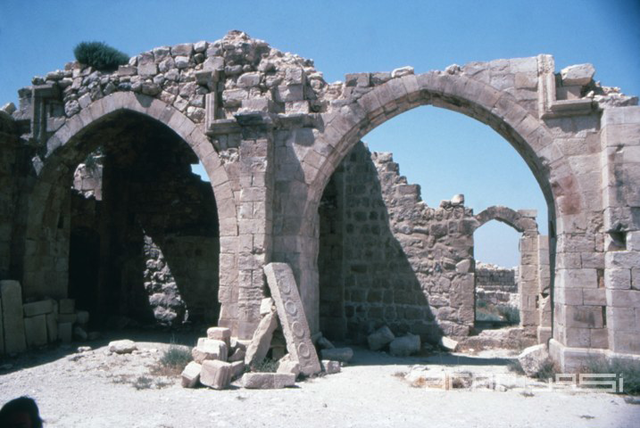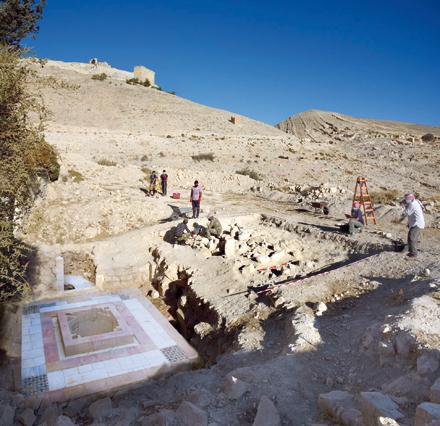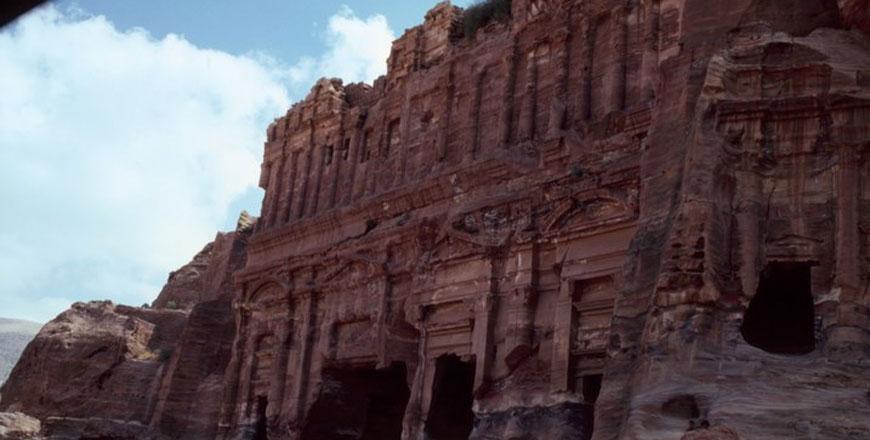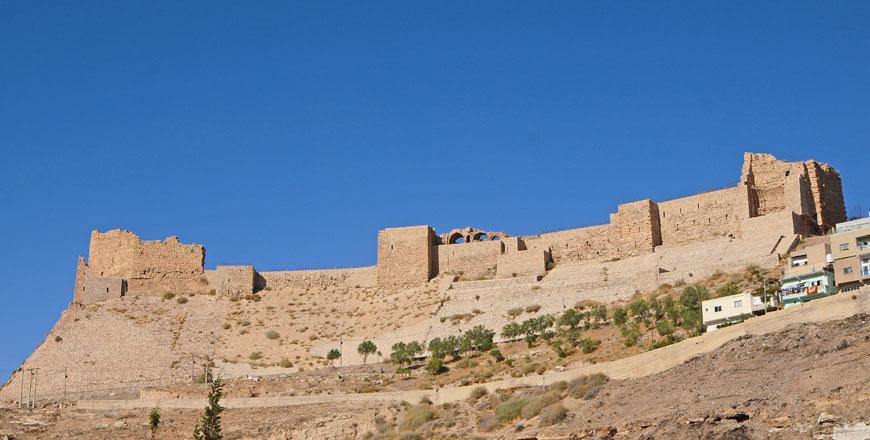You are here
Crusader-Ayyubid Odyssey: Exploring Montreal Castle through pottery discoveries
By Saeb Rawashdeh - Jan 28,2024 - Last updated at Jan 28,2024

Interior structure at Montreal Castle in the southern Jordan (Photo courtesy of ACOR)
AMMAN — Petra and its hinterland, particularly Montreal (Shobak Castle) were part of a defensive system in 12th and 13th centuries. Ajloun, Karak and Shobak were often changing sides during the crusades and over time, the urban settlements developed around the fortifications became commercial centres.
The Italian archaeological mission decided to proceed first with the excavations of Al Wu‘ayra, in order to better understand the forms of the first resettlement in the Petra Valley. Only years later, after the identification of Al Wu‘ayra and Al Habis as fundamental elements in the Latin settlement, especially for the control of the routes between Syria and Egypt, the excavation of Montreal started.
“We were able to analyse the transformation of a castle in an Islamic city, thanks to the will of Saladin,” noted Elisa Pruno from the University of Florence, noting that in every investigated area, the team completed the stratigraphic column, from modern levels to the bedrock, with the collection of the entire fragments assemblage for each layer.
The aim of the research was to describe Montreal’s mediaeval contexts, especially the Crusader and Ayyubid ones, to focus later on the specific production of the HMPW, analysing the materials found in “monumental” area of the castle (i.e. the northern half of the inner enceinte), almost adjacent to the audience hall of the Ayyubid Palace and laying on the inner ring wall of the Crusader period, Pruni explained.
The structure’s masonries show building techniques of the Crusader period on the East and West walls, while the north side is blocked by a wall-plug, showing typical Ayyubid masonry patterns, Pruni continued, adding that this area is therefore most likely to be a monumental building of the Crusader epoch, which was also reused in the Ayyubid period, possibly within the Ayyubid palace.
“A ‘monumental’ door in the East wall was opened in the second phase of the building’s existence. Though it is quite difficult to assess to which period it belongs, due to the extensive reuse of older ashlars in the jambs, the first hypothesis would be to include it in one of the Crusader phases,” explained Pruni.
She continued: “What is indeed clear is that the very same door was reused [or readapted] in the Ayyubid epoch, when the entrance was connected to a beautifully built stairway with concentric semicircular steps, showing extensive tool marks of a small pointed chisel, very similar to the one used for the dressing of the ashlars of the Ayyubid palace’s audience hall.”
Scholars noticed the significant presence of wheel thrown pottery (both mediaeval and pre-Crusader) and the majority of fragments is represented by closed shapes, like in other excavation areas of the castle, mostly cooking and storage wares (and also table ware).
“Many of these forms are comparable with other forms from other excavation areas of Montreal related to the same phases. The preliminary results of the Italian excavations from the point of view of the Crusader-Ayyubid hand-made pottery seem to stress some impacts of medieval ‘Little Traditions’ on its technical environment,” Pruni highlighted.
The Italian team have to answer on questions regarding ceramic tradition that was present in the 12th century Montreal and what happened with the Ayyubid rulers.
“We need to understand if it is possible to notice some differences on the production and market level: Hand-made pottery is commonly considered by archaeologists to be the product of non-specialised potters, usually rural, highly conservative and consumed in close proximity to its place of manufacture,” Pruni underlined.
On the other hand, centralised shops producing industrialised ware used a fast-wheel.
“Manufacture on the fast wheel allows mass production in minimum time and high level of standardisation. It also represents investment in equipment, and therefore stability. All of the above denote organised workshops, operated by specialised craftsmen,” Pruni underscored.
For the Crusader-Ayyubid period, in Montreal, the team notes the absence of standardisation. Concerning a large scale manufacture and wide distribution, it will be very important to realise petrographical analyses of Montreal assemblages and, at least, the same period pottery of Al Wu’ayra, Pruni said.
Related Articles
IRBID — The findings of the Italian archaeological mission in Jordan were highlighted at the 15th International Conference on the History an
AMMAN — The area of the Royal Tombs in the city of Petra contains the Corinthian Tomb, which is between the Palace Tomb and the Silk Tomb.Th
Amman — Karak Castle is the most famous Crusader-Islamic military site in Jordan and appears today as a perfect summary of Crusaders’, Ayyub


















